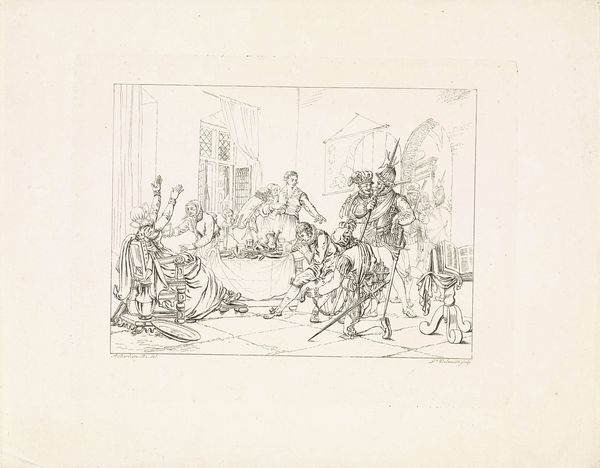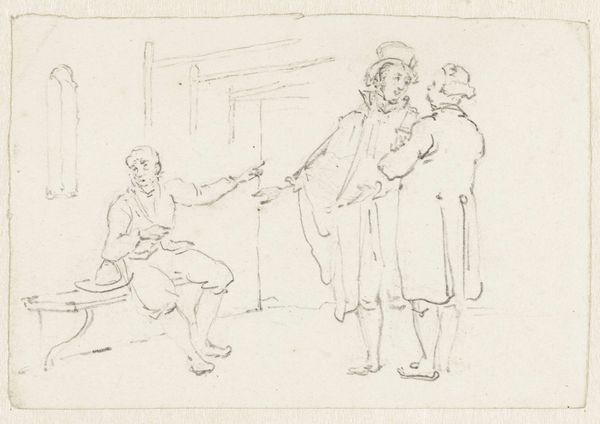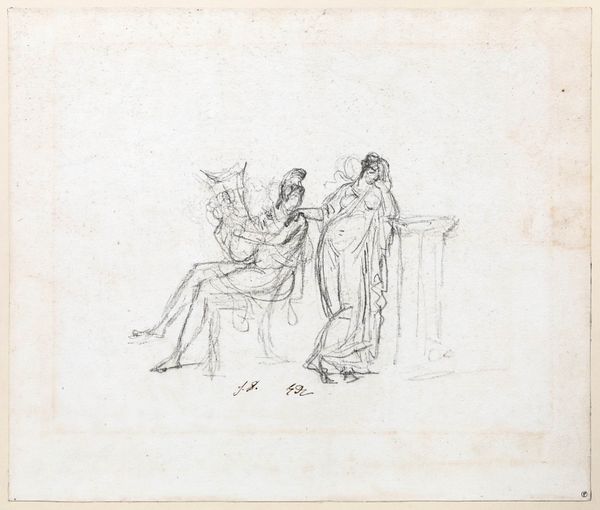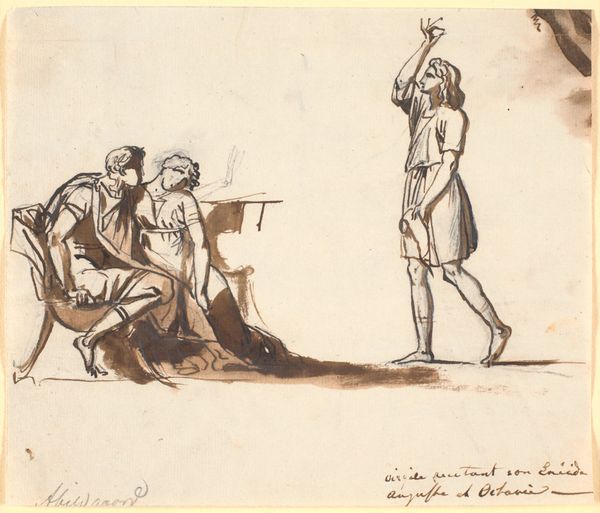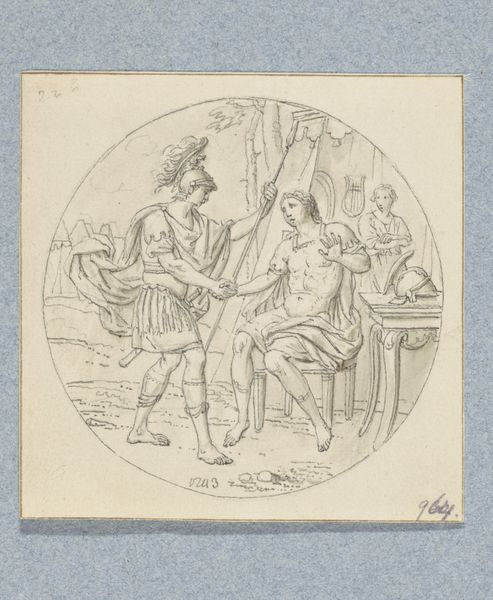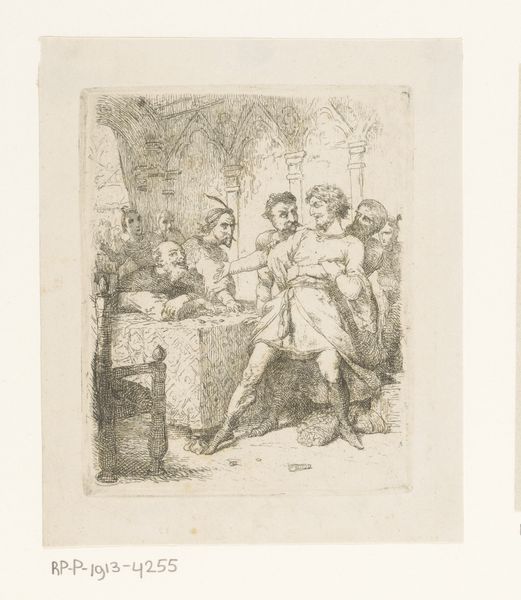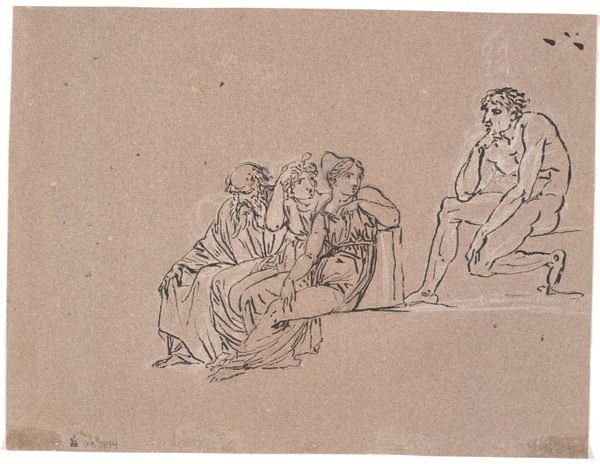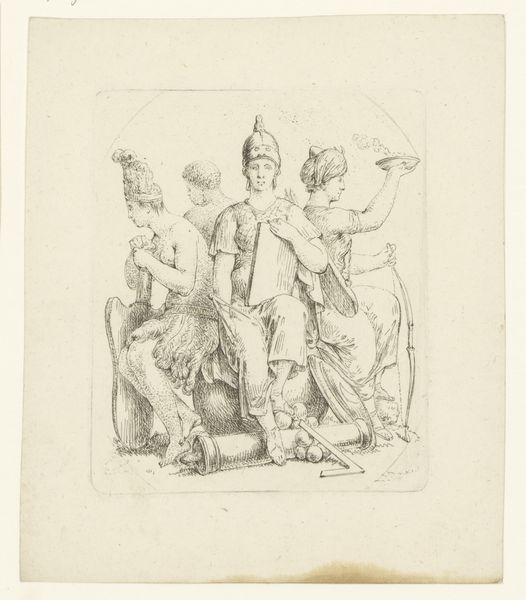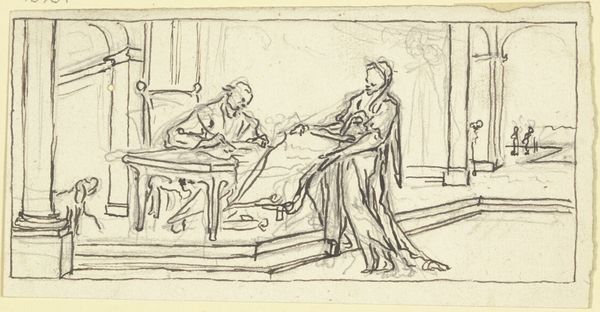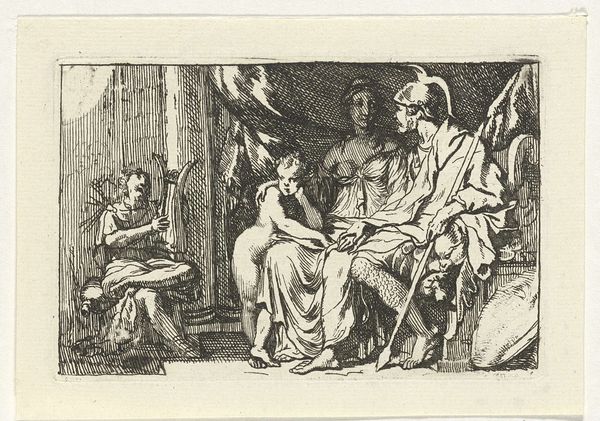
drawing, ink, pen
#
portrait
#
drawing
#
pen illustration
#
ink line art
#
ink
#
romanticism
#
pen
#
genre-painting
Dimensions: height 118 mm, width 177 mm
Copyright: Rijks Museum: Open Domain
Curator: The Rijksmuseum holds this ink drawing by Pieter Bartholomeusz. Barbiers, titled “Twee edelmannen in gesprek”, or “Two Noblemen in Conversation”, created sometime between 1809 and 1837. It strikes me as an intimate genre scene. What's your take? Editor: It definitely feels staged, almost theatrical, despite its domestic setting. The two figures seem frozen in a moment of intense negotiation or conflict. Are we really seeing a candid conversation here, or is something else at play, perhaps social inequity? Curator: Consider Barbiers’ tools: a simple pen and ink on paper. The starkness emphasizes line and form; the scene's lack of color focuses us on the construction. It seems a deliberate aesthetic choice to reflect the material constraints and labor involved. Editor: Absolutely, and within that minimalist rendering, the power dynamics are palpable. Note the figure seated, more adorned and relaxed, dominating the space, versus the other's submissive posture and more austere attire. This evokes the unequal distribution of resources and opportunities. Curator: Let's dig deeper into the materials. Ink drawings during this era were often preliminary sketches for larger, more elaborate works. Was this drawing an end product or part of a process exploring wealth and class depiction? Editor: That's precisely my thought; this could be read as a study in hierarchical roles. The setting itself—presumably an opulent interior—speaks to themes of privilege, access, and perhaps the artist's commentary on those dynamics in Dutch society during a period of socio-political change. The cost of raw materials impacted choices in artwork, reflecting a shift in consumer values within society. Curator: The social element seems to intersect neatly with Barbiers' romantic style – note the exaggerated emotions, slightly melodramatic. Could these indicate sympathy towards the less privileged figure? Or perhaps simply embellishing the human element? Editor: Maybe there’s also some performative action, or play, within the illustration too; not to excuse an imbalance of resources and/or wealth, but maybe also just the simple exchange between the two edelmannen: dialogue, action, performance. And from that simple, drawn scene, what conclusions, analyses, judgements or feelings have you drawn from the encounter between these two men? Curator: An intriguing reading, indeed. Thinking about production means the access, choices and, therefore agency. It offers a compelling perspective on social dynamics depicted with just lines on paper. Editor: It allows us to reconsider not just aesthetic intent but to address questions on social standing that are relevant today, through artwork, regardless of the medium!
Comments
No comments
Be the first to comment and join the conversation on the ultimate creative platform.
